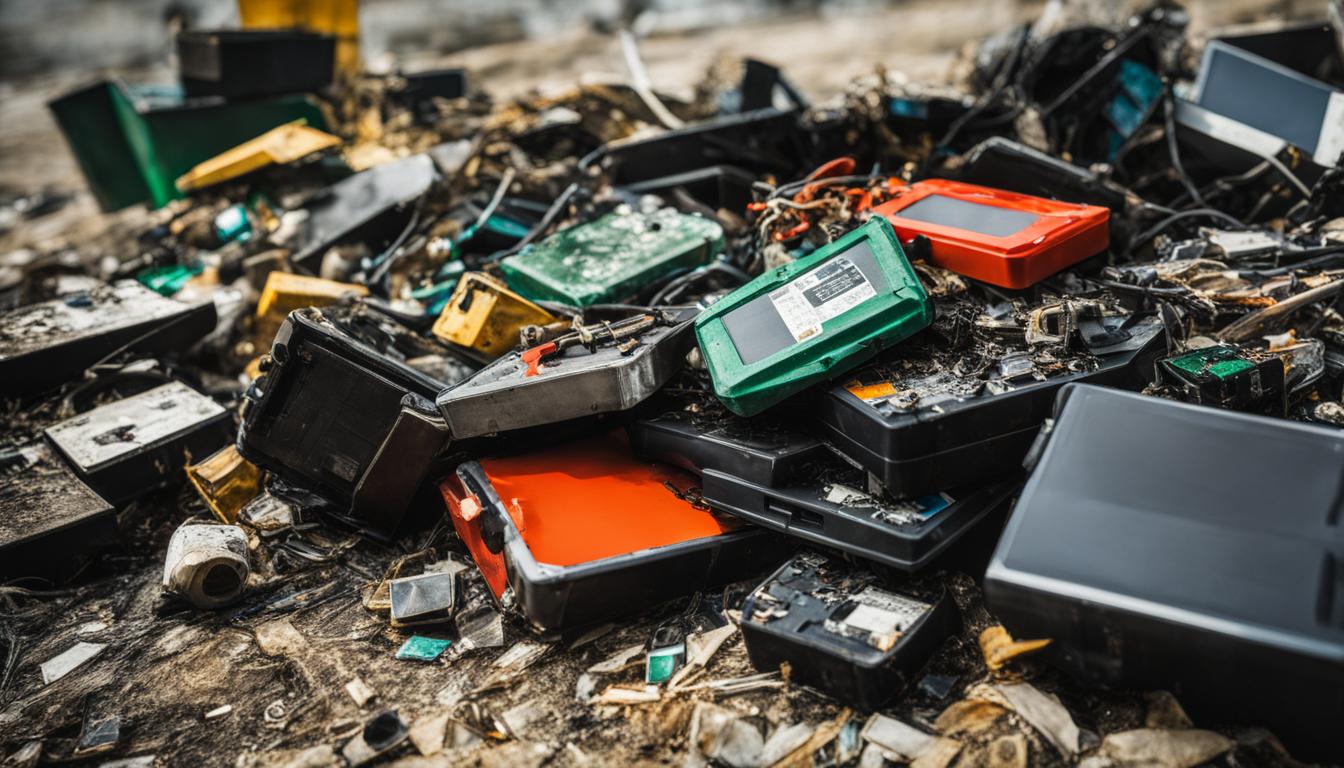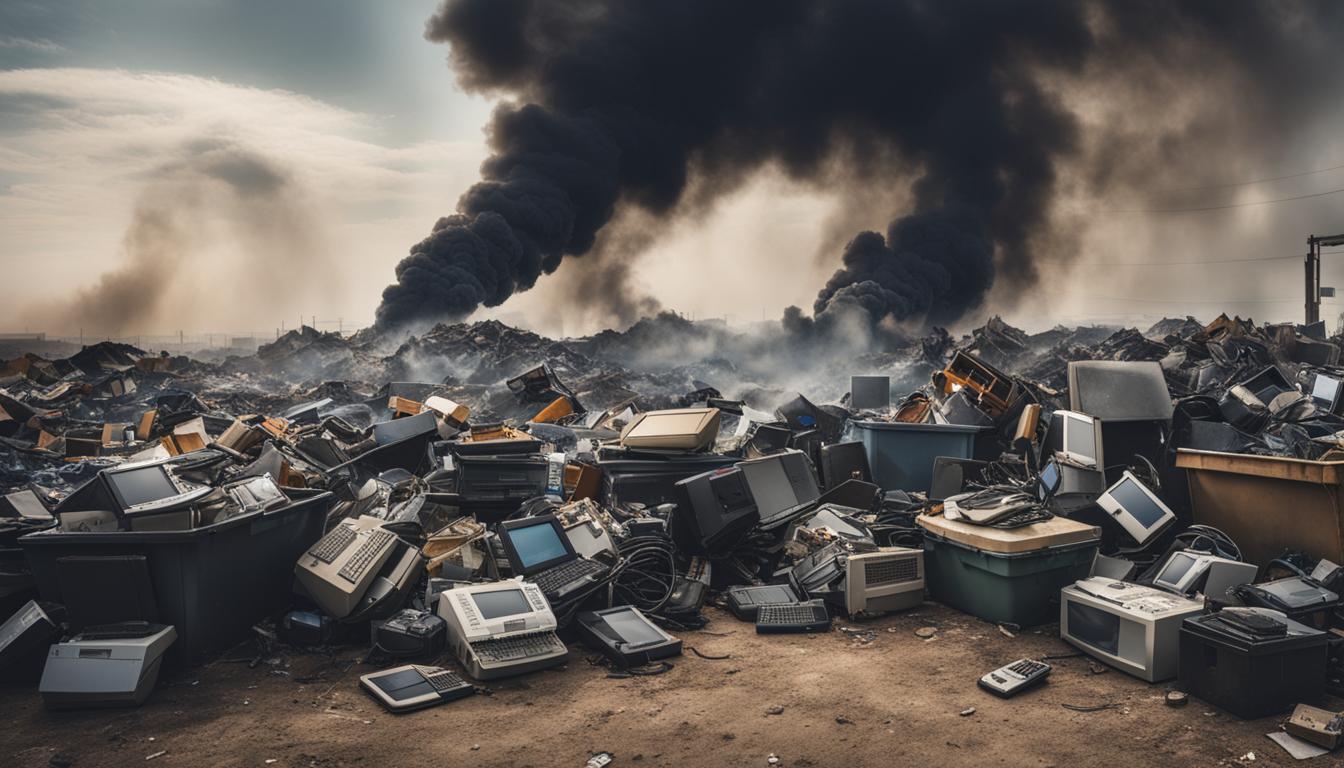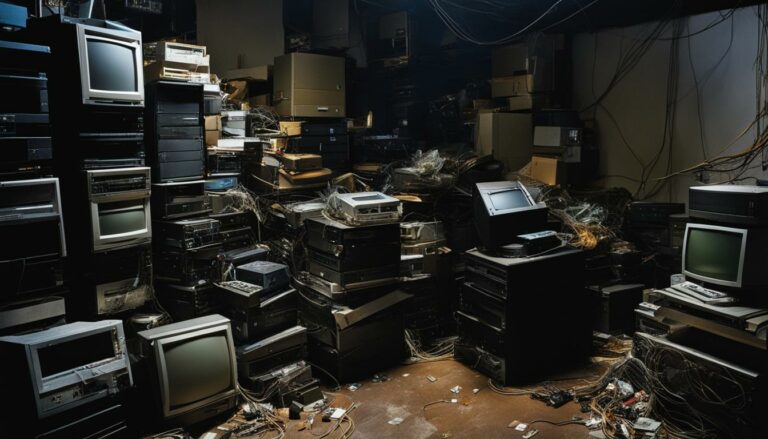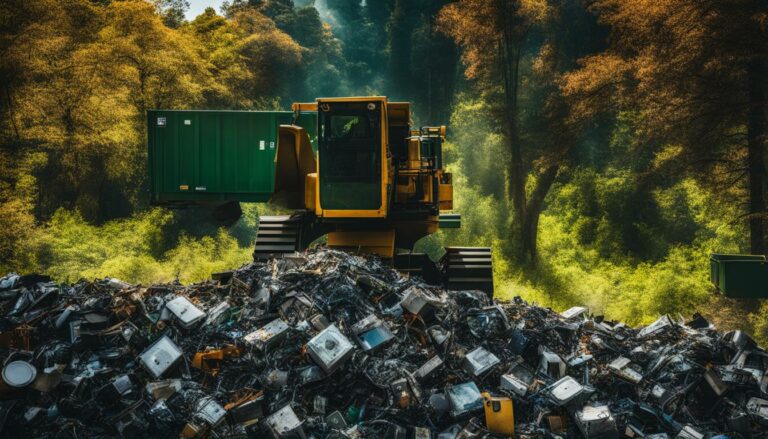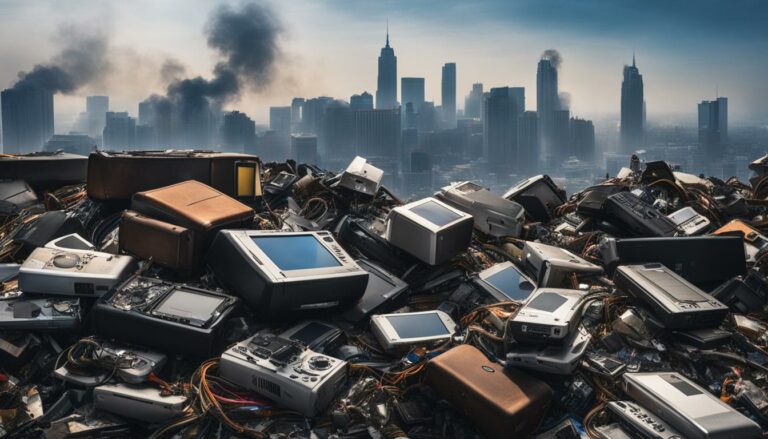In Focus: Hazardous Materials in E-waste
E-waste is the fastest growing solid waste stream in the world, with an estimated 53.6 million tonnes produced globally in 2019. However, only 17.4% of this e-waste was formally collected and recycled. The improper recycling, storage, or dumping of e-waste can release hazardous substances like lead into the environment, posing risks to human health, particularly for children and pregnant women. Millions of women and child labourers working in the informal e-waste recycling sector are at risk of exposure. Responsible management and disposal of e-waste are crucial to protect the environment and human health.
Key Takeaways:
- Hazardous materials in e-waste pose significant risks to human health and the environment.
- Improper recycling and disposal can release toxic substances into the environment.
- Children and pregnant women are particularly vulnerable to the health risks associated with e-waste.
- International agreements and regulations play a vital role in addressing e-waste issues.
- Responsible e-waste disposal involves adopting sound recycling techniques and implementing health protection measures.
Environmental Impact of E-waste
E-waste, also known as electronic waste, poses significant environmental hazards if not managed properly. The improper treatment and disposal of e-waste can lead to the release of hazardous substances into the environment, causing pollution and long-term damage. The environmental impact of e-waste is a growing concern that requires immediate attention and responsible recycling processes.
When e-waste is subjected to unsound techniques, it releases around 1000 different chemical substances, including neurotoxicants like lead and mercury. These substances have detrimental effects on the environment, contaminating the air, soil, dust, and water at recycling sites and neighboring communities. Toxic pollutants are also released through activities such as dumping and open burning of e-waste, which further contributes to environmental pollution.
“The toxic fumes created by burning or heating e-waste are particularly hazardous.”
The toxic pollutants generated from e-waste can travel long distances, affecting ecosystems and exposing people in faraway areas to health-damaging substances. It is crucial to implement proper recycling processes that are environmentally sound to minimize and mitigate the environmental impact of e-waste.
Table: Effects of Improper E-waste Disposal on the Environment
| Environmental Impact | Description |
|---|---|
| Air Pollution | Release of toxic fumes and pollutants during open burning or heating of e-waste. |
| Soil Contamination | Leaching of hazardous substances into the soil, affecting vegetation and groundwater. |
| Water Contamination | Release of toxic chemicals into water bodies, polluting rivers, lakes, and oceans. |
| Ecosystem Disruption | Damage to biodiversity and ecosystem balance due to the presence of hazardous substances. |
The environmental impact of e-waste is an urgent issue that requires global cooperation and responsible e-waste disposal practices. By adopting environmentally friendly recycling techniques and implementing stringent regulations, we can minimize the negative consequences and create a sustainable future for our planet.
Health Risks of Hazardous Materials in E-waste
E-waste contains a range of hazardous materials that can pose significant health risks to individuals, particularly children and pregnant women. Exposure to these toxic substances, such as lead and mercury, can have severe consequences on human health and development. Children who engage in waste picking and scavenging activities are especially vulnerable to direct exposure to high levels of toxic chemicals.
Pregnant women and children exposed to hazardous materials in e-waste are at a higher risk of experiencing adverse neonatal outcomes, neurodevelopmental issues, reduced lung function, and increased asthma incidence. The neurotoxicants found in e-waste can disrupt the development of the central nervous system and respiratory function, leading to long-term health effects in children.
Proper e-waste management strategies, including responsible disposal, are essential in protecting vulnerable populations from the health risks associated with hazardous materials. Implementing measures such as improving recycling activities, monitoring e-waste sites and surrounding communities, and eliminating child labor can help mitigate these risks. By prioritizing the health and well-being of individuals, we can minimize the negative impacts of e-waste on human health.
| Hazardous Materials | Health Risks |
|---|---|
| Lead | Disruption of central nervous system development, reduced cognitive function |
| Mercury | Neurological damage, impaired motor skills and coordination |
| Cadmium | Kidney damage, impaired lung function |
| Chromium | Lung cancer, respiratory irritation |
Responsible e-waste disposal is vital in preventing the release of these hazardous materials into the environment and safeguarding human health. By adopting proper e-waste management strategies and implementing comprehensive recycling processes, we can protect individuals from the health risks associated with e-waste hazards. It is crucial for governments, organizations, and communities to work together to ensure responsible e-waste disposal and create a safer and healthier environment for all.
E-waste Regulations and International Agreements
E-waste management is a global concern, and to address the challenges associated with it, there are international agreements and regulations in place. These measures aim to control the transboundary movement of hazardous wastes, including e-waste, and ensure responsible disposal practices.
The Basel Convention is one such international agreement that regulates the movement of hazardous wastes. It prohibits the export of hazardous wastes from developed countries to developing countries, thereby preventing the dumping of e-waste in regions ill-equipped to handle it responsibly. This helps in reducing environmental pollution and health risks associated with improper e-waste disposal.
In addition to the Basel Convention, there are regional agreements like the Bamako Convention and the Waigani Convention that restrict the movement of e-waste within specific regions. These agreements contribute to creating a more sustainable and responsible e-waste management system by promoting local recycling and reducing the reliance on hazardous exports.
Table: International Agreements and Conventions on E-waste
| Agreement/Convention | Scope | Key Provisions |
|---|---|---|
| Basel Convention | Global | Controls transboundary movement of hazardous wastes, including e-waste |
| Bamako Convention | Africa | Restricts movement of hazardous wastes within the African region |
| Waigani Convention | Pacific Islands | Limits the export of hazardous wastes in the Pacific Islands region |
At the national level, many countries have established their own e-waste management legislation to regulate the recycling and disposal of electronic waste. Compliance with these laws and regulations is essential to ensure responsible e-waste recycling and minimize the environmental and health risks associated with hazardous materials.
By implementing these international agreements, regional conventions, and national regulations, we can create a more sustainable and responsible e-waste management system. This will not only protect the environment but also safeguard human health for generations to come.
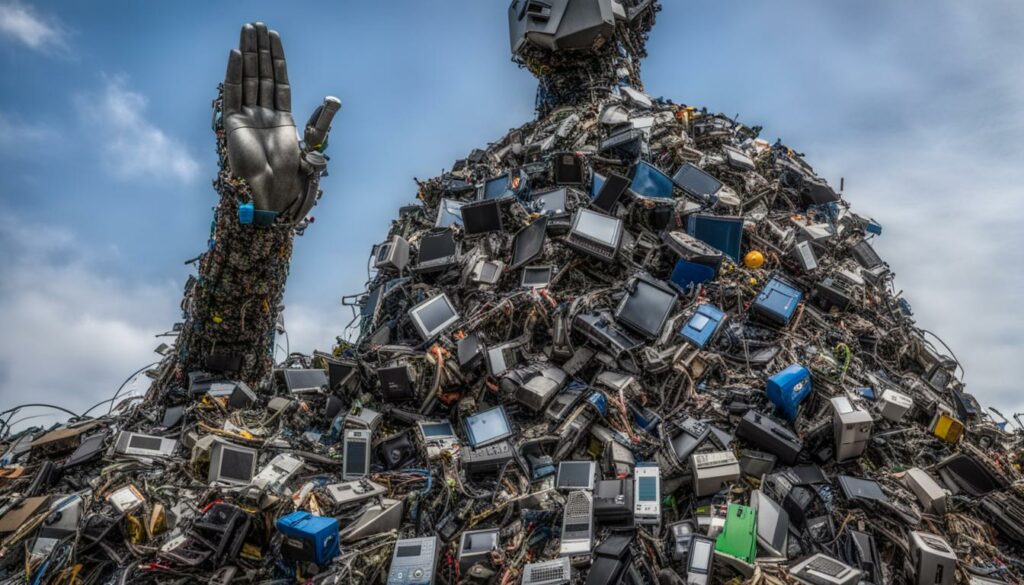
Responsible E-waste Disposal Solutions
Responsible e-waste disposal is essential to minimize the environmental and health risks associated with hazardous materials in electronic waste. By adopting a comprehensive approach, we can ensure the proper management and recycling of e-waste, protecting our planet and communities.
Legislation and International Agreements
One crucial aspect of responsible e-waste disposal is the implementation of national e-waste management legislation and compliance with international agreements. High-level international agreements, such as the Basel Convention, control the transboundary movement of hazardous wastes, including e-waste. These agreements prohibit the transfer of e-waste from countries with stricter regulations to those with fewer regulations, preventing the improper disposal of hazardous materials.
Furthermore, regional conventions like the Bamako Convention and the Waigani Convention restrict the movement of e-waste within specific regions, ensuring that hazardous materials are not transferred irresponsibly. By adhering to these agreements and implementing national legislation, countries can establish a framework for responsible e-waste management and disposal.
Health Protection and Education
In addition to legislation and international agreements, responsible e-waste disposal requires health protection measures and education. Monitoring e-waste sites and surrounding communities is crucial to identify and address any potential health risks. By conducting regular inspections, we can ensure that proper safety measures are in place and that workers are protected from harmful exposure to hazardous materials.
Educating health workers about the dangers of e-waste and providing them with the necessary training and resources is another crucial aspect of responsible disposal. Health workers play a vital role in identifying and treating health issues related to e-waste exposure. By equipping them with knowledge and resources, we can improve the overall health outcomes for communities affected by e-waste.
Environmentally Sound Recycling Techniques
Responsible e-waste disposal also involves recycling electronic waste using environmentally sound techniques. Proper recycling processes ensure that hazardous materials are safely extracted and disposed of, minimizing the release of toxic substances into the environment. By adopting these techniques, we can reduce the environmental impact of e-waste and prevent contamination of air, soil, water, and surrounding communities.
| Benefits of Responsible E-waste Disposal |
|---|
| Protects the environment from toxic pollutants |
| Safeguards human health, particularly for vulnerable populations |
| Promotes sustainable resource management through recycling |
Responsible e-waste disposal is a shared responsibility that requires collaboration between governments, organizations, and individuals. By implementing legislation, adhering to international agreements, ensuring health protection, and utilizing environmentally sound recycling techniques, we can create a sustainable future and protect our planet from the dangers of e-waste.
Conclusion
Hazardous materials in e-waste present significant risks to human health and the environment. Improper recycling and disposal can release toxic pollutants, posing a threat to individuals, especially children and pregnant women. To mitigate these risks, responsible e-waste management strategies, including proper recycling processes and the implementation of international agreements and regulations, are essential.
Responsible e-waste disposal involves adopting and enforcing high-level international agreements, implementing national e-waste management legislation, and incorporating health protection measures. It is crucial to monitor e-waste sites and surrounding communities, improve recycling activities, educate health workers, and eliminate child labor. Furthermore, recycling e-waste using environmentally sound techniques and ensuring the legality of importing or exporting focus materials are key aspects of responsible disposal solutions.
By prioritizing responsible e-waste management, we can protect the environment, safeguard human health, and contribute to a sustainable future. Through proper recycling processes and responsible disposal, the risks associated with hazardous materials in e-waste can be minimized. Together, we can create a safer and healthier world for future generations.
FAQ
What is e-waste?
E-waste refers to electronic waste, which includes discarded electronic devices such as computers, mobile phones, TVs, and appliances.
Why is e-waste a concern?
E-waste is a concern because it is the fastest growing solid waste stream globally and contains hazardous materials that can harm human health and the environment if not properly managed.
What are the health risks associated with hazardous materials in e-waste?
Hazardous materials in e-waste, such as lead and mercury, can pose risks to human health, particularly for children and pregnant women. They can lead to adverse neonatal outcomes, neurodevelopmental issues, reduced lung function, and increased asthma incidence.
How does improper recycling of e-waste impact the environment?
Improper recycling of e-waste can release toxic pollutants into the air, soil, dust, and water, contaminating the environment and neighboring communities. It can also lead to the release of around 1000 different chemical substances, including neurotoxicants like lead, into the environment.
What are the international agreements and regulations in place for e-waste?
The Basel Convention controls the transboundary movement of hazardous wastes, including e-waste. Regional conventions like the Bamako Convention and the Waigani Convention also restrict the movement of e-waste in specific regions. National e-waste management legislation and compliance with environmental, health, and safety regulations are also essential.
How can responsible e-waste disposal be achieved?
Responsible e-waste disposal involves adopting and enforcing high-level international agreements, implementing national e-waste management legislation, and incorporating health protection measures into legislation. It also includes monitoring e-waste sites, improving recycling activities, educating health workers, and eliminating child labor.

